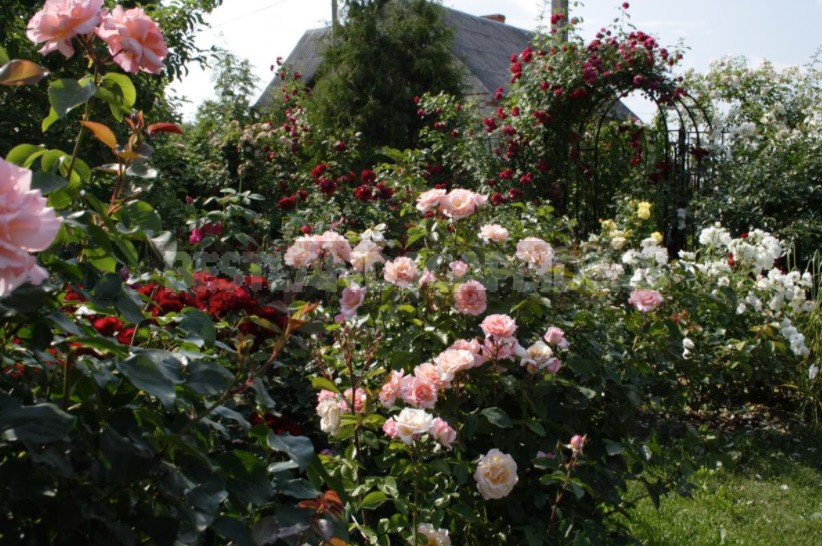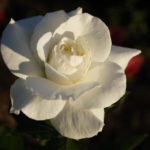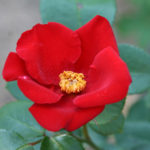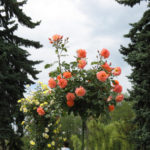Among modern wattled roses, there are real wattled roses (Rambler), Large-flowered Climber, and wattled forms of other groups, United under the name “climbing”. You can also find wattled roses among old roses. Lovers often give their preferences to wattled large-flowered roses — for large flowers of a beautiful shape. However, this is not the main argument when choosing.
Single-bloom Ramblers
Wattled roses of the Rambler garden group have long flexible shoots up to 4-10 m, bloom exceptionally profusely and for a long time, but only once. These roses are sometimes called curly, although they can not wrap around the support or independently attach to it. The supports must be strong, because the crown, especially after rain, is a huge mass. The supports should not have small cells, otherwise the shoots grow in them, get mixed up, and shelter is possible only together with the support.
These roses overwinter well under a light ventilated shelter, when organizing which you need to remove the roses from the supports and lay long shoots in rings. The flowers are small, often double, collected in large inflorescences, sometimes up to 90 flowers. Flowering occurs on overwintered shoots, young growing shoots do not bloom in the first year of vegetation. The main base of flowering of the next season in these roses – young shoots of the current year, old shoots quickly and sharply reduce flowering.
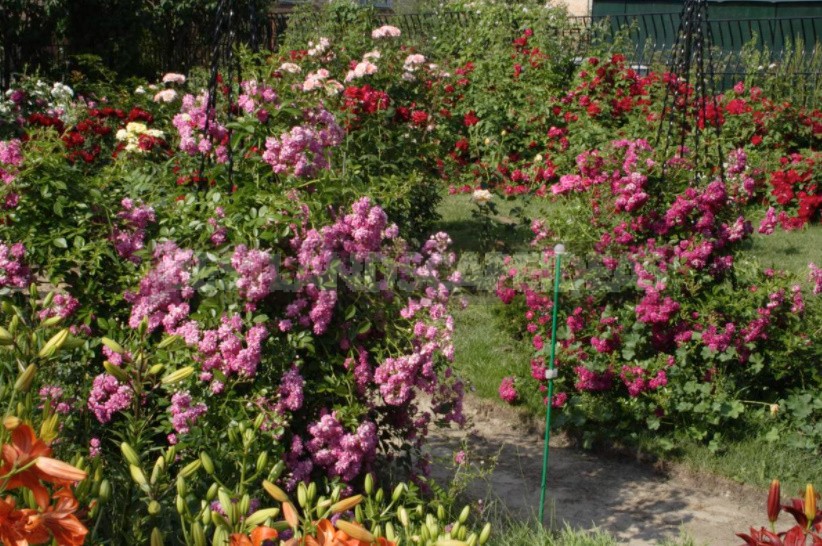
The most powerful varieties (’Filipes Kiftsgate‘, ’Bobbie James’) fully bloom in the third (sometimes even the fourth) year after planting. At first, they take root reliably, capture space, and then begin to bloom. They are used for decoration of arches, columns, pergolas, fences and walls of buildings, but the dream called “roses climb trees” in our climate does not come true.
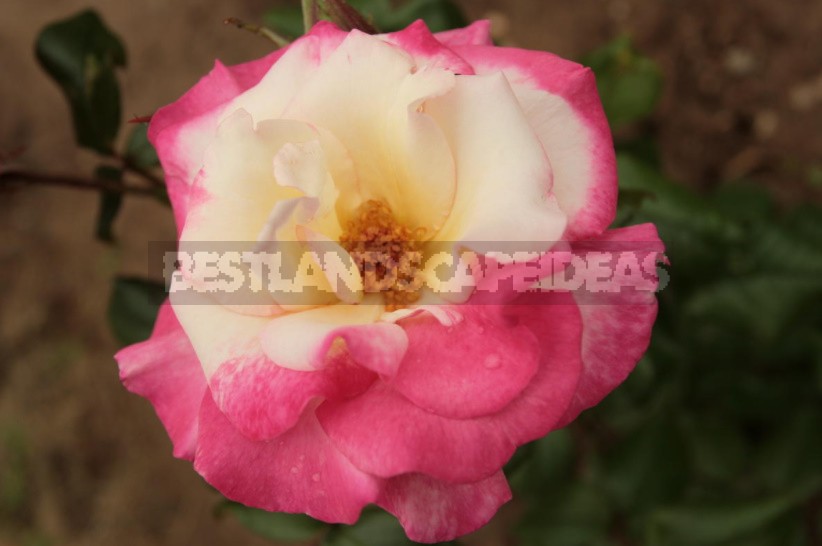
Modern selection has hardly added any new products to the range of wattled roses of this class that developed at the beginning of the last century, but over such a long period, priorities have been determined for various environmental conditions. The following varieties were widely distributed in Russia:
- ‘Dorothy Perkins’ (1901),
- ‘American Pillar’ (1902,)
- ‘Excelsa’ (1908),
- ‘Veilchenblau’, (1909),
- ‘Amethyste’, (1911).

Later appeared in our gardens ‘Alberic Barbier’ (1900), ’Aviateur Bleriot‘ (1910), ’Raubritter‘ (1936), ’Filipes Kiftsgate‘ (1954), ’Bobbie James’ (1961).
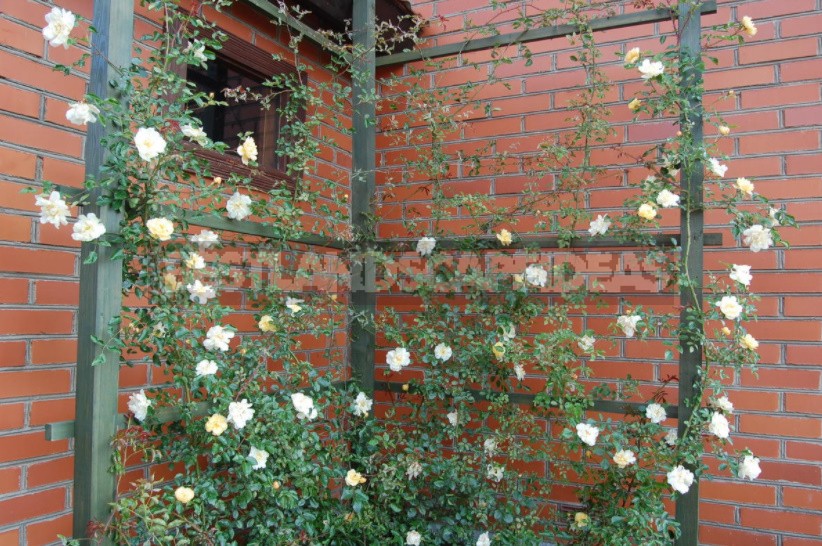
Pruning and care
Rambler class rose pruning has its own specifics:
- it should be carried out immediately after the completion of the flowering phase;
- shoots older than two years of age are cut out completely, at the level of the soil;
- in the spring after sanitary pruning, the side shoots are cut to a length of no more than 15 cm;
- young shoots ripen better along the entire length and winter well if their tops are pinched on 3-4 leaves in early September.
These roses create two problems: too voluminous growth and a persistent tendency to powdery mildew. Attempts to restrain growth fail, and experienced gardeners are advised to let these roses grow freely. Some varieties grow so powerfully that they are not suitable for a small garden. In addition, modern rose lovers are no longer satisfied with a single — even if abundant and long-term-flowering. However, the main problem of these roses is associated with powdery mildew.

Powdery mildew is the eternal companion of once-blooming Ramblers. The causative agent of this disease is the fungus Podosphaera pannosa (Wallr), de Bary. The viability of the infectious structures of the fungus persists for only a few hours, but the potential for infection is huge.
Any varieties of roses that are prone to powdery mildew, especially Ramblers, should not be planted near walls and in places protected from the wind. It is better for such plants to choose places with good air circulation. Regular watering and loosening of the soil to prevent moisture loss in hot and dry summers can slightly reduce the severity of symptoms of susceptible varieties.
Sometimes at the wrong place of planting, even with the most careful care, the symptoms of the disease on some varieties of this group are so pronounced, and the therapeutic effect of using even modern drugs is so insignificant that it can prompt a radical solution.

Sick plants are not only a loss of decorative properties, but also a constant source of infection. Although, if you do not get carried away with the amount and provide good conditions for airing, the problem of powdery mildew can be kept under control.
Remontant varieties of Ramblers
Despite the obvious disadvantages of Ramblers associated with their tendency to powdery mildew, interest in them does not weaken. Consumer demands are forcing the breeders to re-turn in the direction of Ramblers. Some experts even predict the upcoming “Rambler era”.
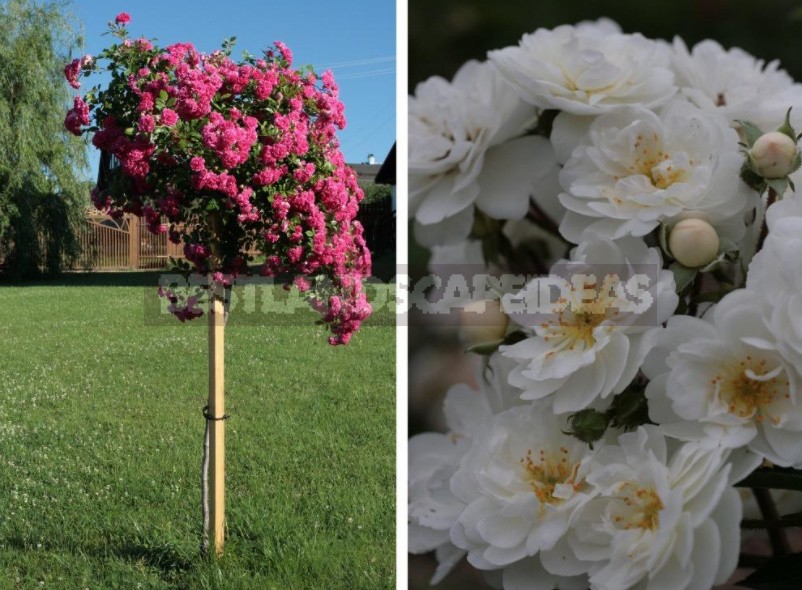
The appearance of ‘Super Dorothy’ (Hetzel, 1986) and ‘Super Excelsa’ (Hetzel, 1986) became a sensation. Finally, roses have a chance to bloom again with limited growth. These varieties began to spread widely, but later it turned out that they are not without disadvantages: roses slowly grow a wide Bush, and the blooming vertical is almost unattainable.
In recent decades, remontant varieties with pronounced vertical growth and excellent resistance to powdery mildew have appeared: ‘Guirlande d’amour’ (Lens, 1993), ‘Guirlande Rose’ (Lens, 2008), ‘Perennial Blue’ (Eurosa/Rosen Tantau, 2008), ‘Perennial Blush’ (Eurosa/Rosen Tantau, 2009).
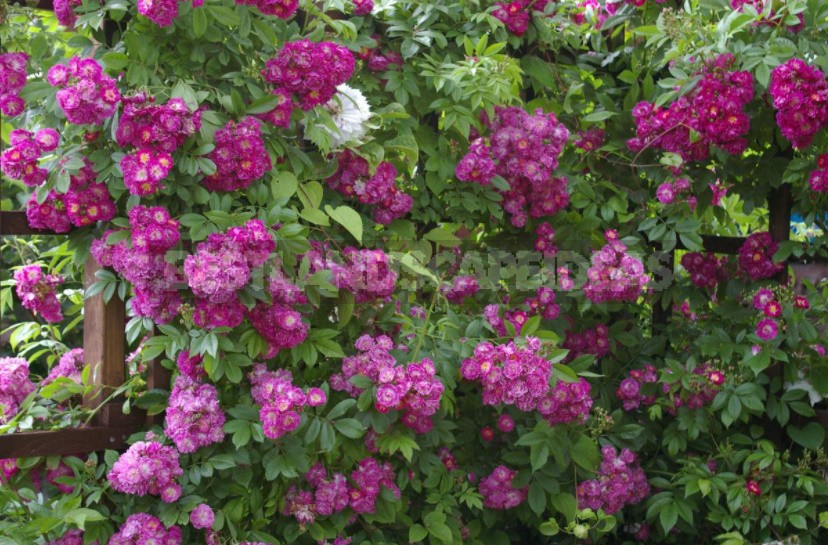
Trim remontant varieties of Ramblers by the type of wattled large-flowered roses.
Large-flowered climbing rose
Large-flowered climbing roses are characterized by hard, thick shoots and large, often double, flowers of a beautiful shape. The main base of flowering is provided by short flowering shoots of the current year, departing from older stems. These roses mostly bloom profusely and repeatedly.
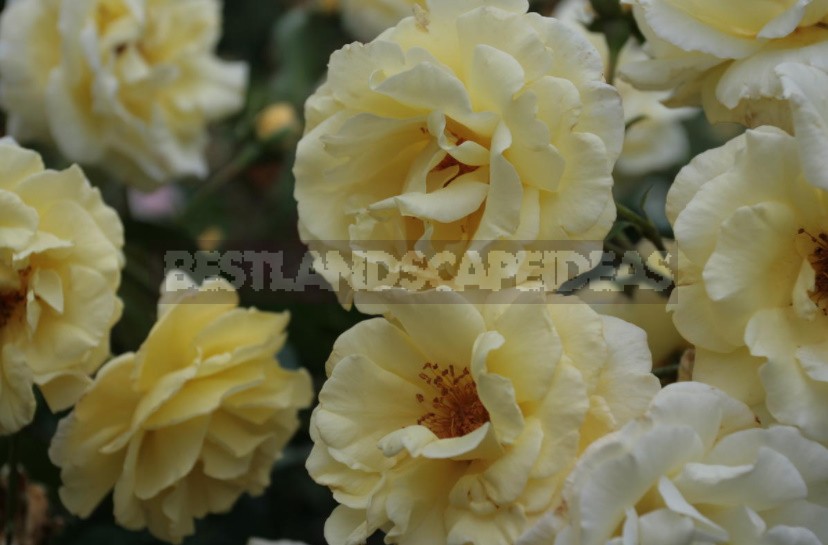
Novice rose growers are fascinated by wattled roses from illustrations in garden magazines, where they entwine arches, pergolas, walls of buildings and fences. Unfortunately, in our reality, these dreams are difficult to fully realize, but do not despair, some enthusiasts and fans of wattled roses manage to show their favorites in full glory in the middle lane.
The difficulty of growing this class of roses in the middle zone is associated with difficulties in hiding them for the winter. Hard, thick shoots are difficult to bend to the ground, so the plants suffer more from mechanical damage than from frost. After spring pruning, the rose sometimes looks like a shrub in summer with the base of the Bush exposed, and the remaining shoots become even thicker. Lovers of roses of this class should choose varieties with relatively plastic shoots that come out of the winter with less losses.
Clipping
In autumn, this group of roses does not need pruning, but before hiding, you need to cut off all the unripe parts of the shoots.
- In the spring, after warming the soil, pruning should be carried out to the upper overwintered buds. Some overwintering shoots that are too long can be shortened to give the Bush a neat shape.
- Side shoots should be cut off, leaving no more than 2-3 buds.
- To rejuvenate the Bush every year, starting from the 4th year after planting, cut out completely 1-2 old shoots.
- In summer, immediately after flowering, you should remove the faded inflorescences with part of the stem to the nearest real leaf.
